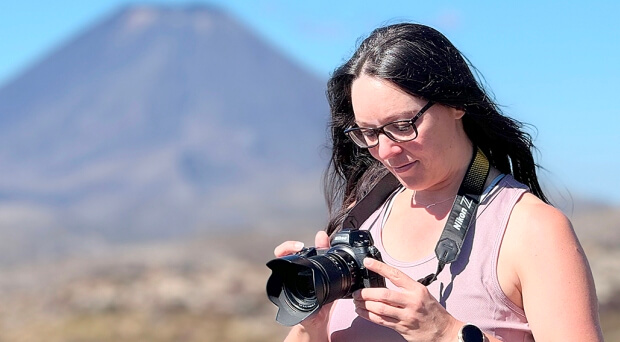On September 23, 1995, I was waiting at Wellington Airport for a German exchange student to arrive on the 8am flight from Auckland. When he landed, he was very excited because he had seen a volcano.

Christine Bryant
I assumed he meant he had seen some steam from Ngauruhoe, but no. This was the major eruption of Ruapehu which marked the start of the biggest eruptions on the mountain since 1945. A truly awesome sight.
I am fascinated by Janine Krippner’s articles about the moving and shaking of the earth. I enjoyed her articles about the eruptions on Tenerife and what she learned from them. They remind me that, despite 40 years of living in Wellington and becoming accustomed to regular shakes, I know little about the ongoing processes which constantly re-shape the earth.
I am reminded also of the immense power inherent in God’s creation. Mountains blow their tops, rivers change course and tidal action erodes massive cliffs. How small we are in comparison to such awesome forces.

Janine Krippner
For many peoples, mountains are sacred places where they can encounter their God: Mt Sinai where Moses received the Ten Commandments, Temple Mount/the Dome of the Rock with Al-Aqsa Mosque because Muslims believe that Mohammed ascended to heaven from here, Machu Picchu, high in the Andes, was sacred to the Incas, and Uluru, sacred to the Pitjantjatjara people of the Northern Territory, are just a few examples.
In Aotearoa, every iwi has a mountain with which it identifies. In fact, it is usual to begin a greeting with: “Ko (name of mountain) te maunga”, thus placing yourself in the context of the most imposing local landmark. It is little wonder, then, that Maungatautari, which most of us see every day, is known in English as Sanctuary Mountain. Not only is it a place of safety for endangered native birds, but also it is a place where the diversity of creation is recognised and honoured.
Last Sunday was the fourth in the season of Care for Creation. The theme was mountains. Mountains have been some of the most exploited of nature’s features, mostly because of the minerals they contain. Mt Isa and Broken Hill in Australia have massive open-cast mines which deface the environment for kilometres.
Mining also creates hills of waste. In Wales, there are still huge slag heaps, one of which collapsed on a school in Aberfan with devastating results.
Yet, we need to value our mountains and recognise that their pristine environments are a symbol of the promises of God. In the words of a well-known (Christian) song: Did you feel the mountains tremble? Did you hear the oceans roar, When the people rose to sing of Jesus Christ, the risen one?
No matter what obstacles arise in life or what crevasses we fall into, God’s love is always available to sustain us and lift us again to the mountain top. As the prophet Isaiah said: They shall neither hurt nor destroy in all my holy mountain, says the Lord.
I hope that next time you stand on a hilltop or a mountain, you will look down and marvel at creation before you.








